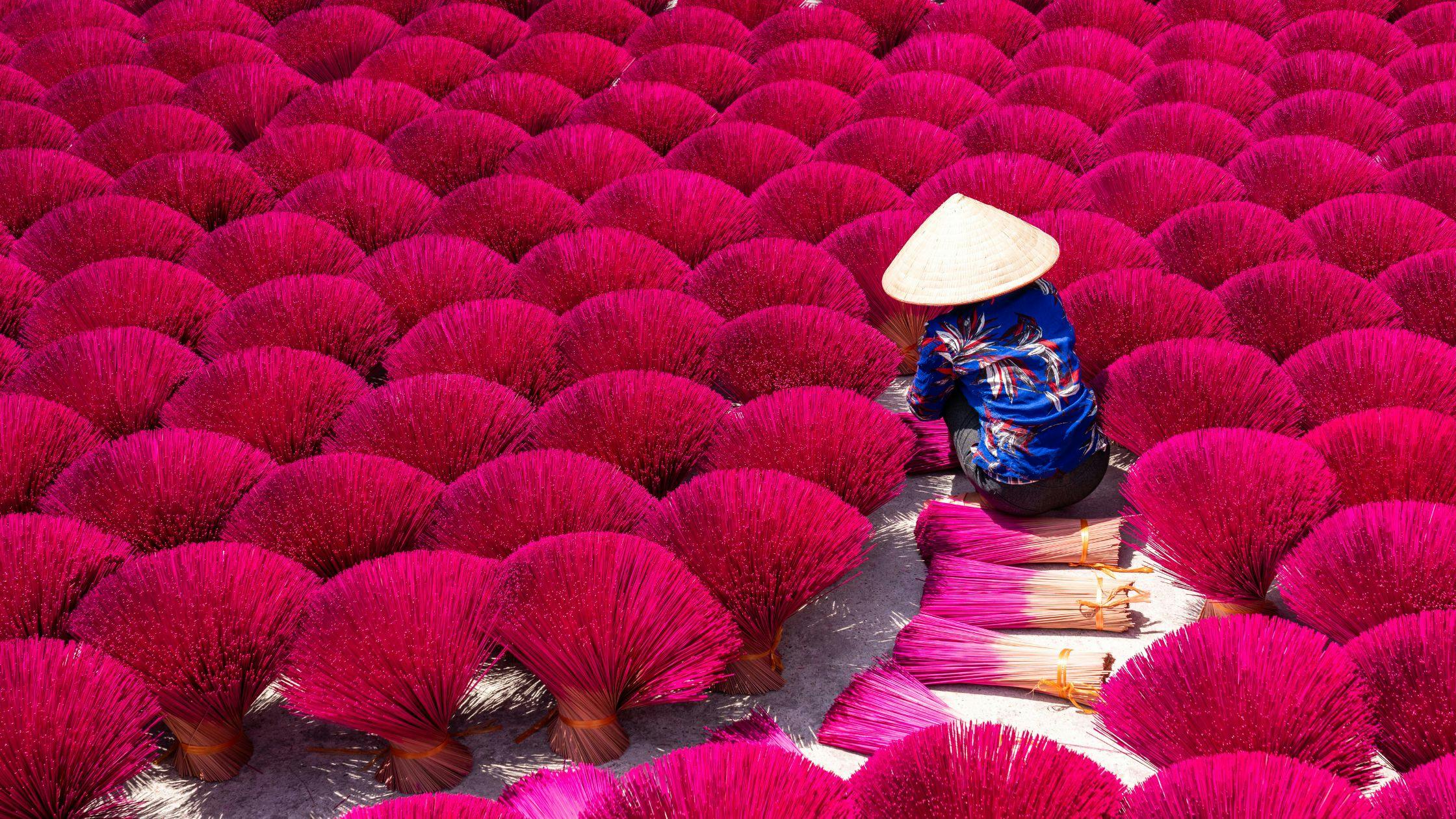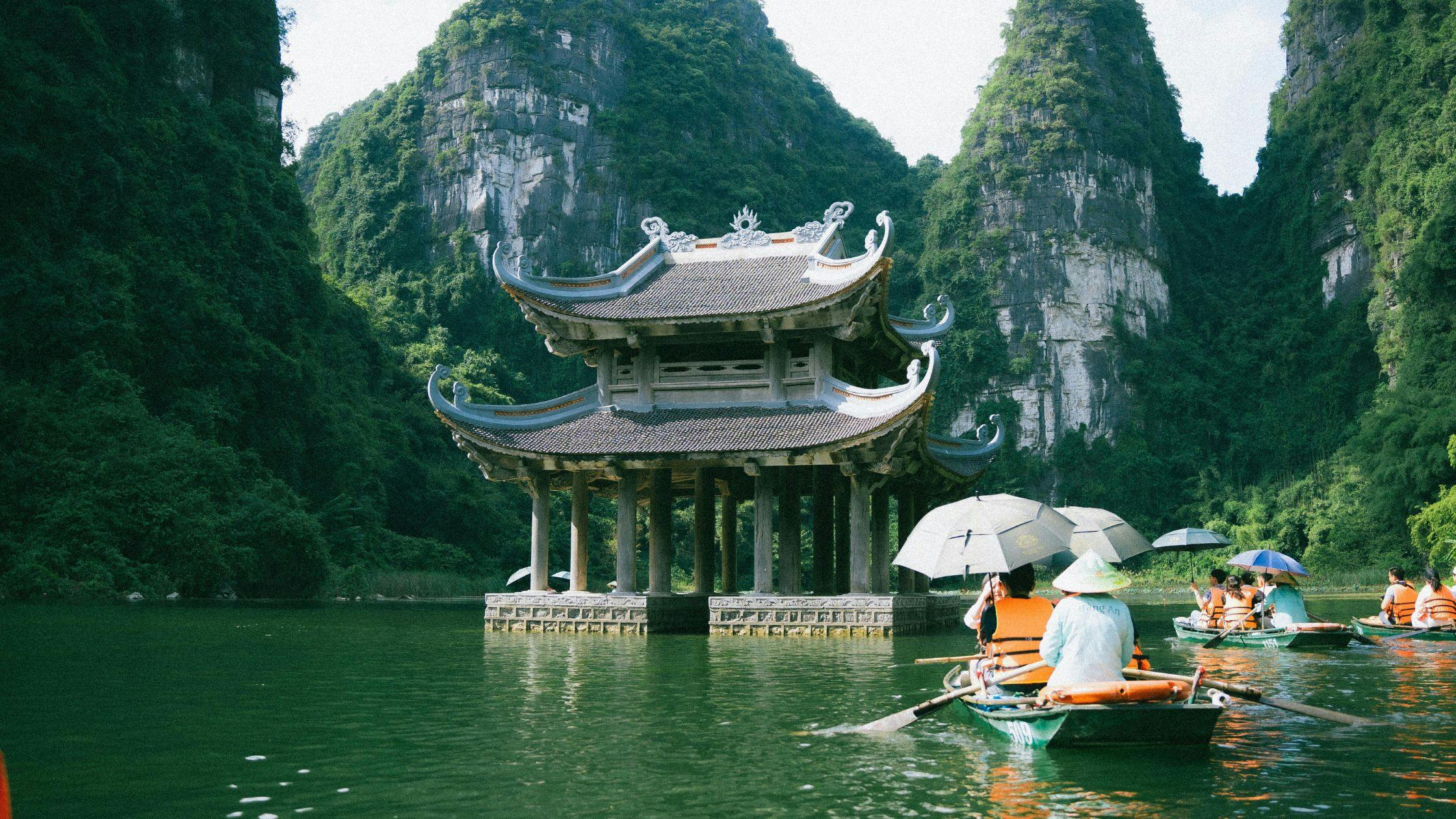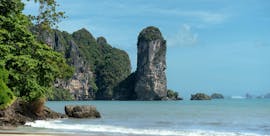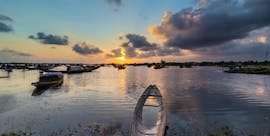Best Time to Visit Vietnam: Month-by-Month Weather & Events Guide

Vietnam’s slender, S-shaped curve stretches over 1,000 miles from north to south, creating a stunning tapestry of diverse climates and landscapes. This means there’s never a truly “bad” time to visit, only the best time for the experiences and regions you want to explore.
Whether you’re trekking through misty mountains in the north, wandering ancient towns in the center, or relaxing on palm-fringed southern beaches, this month-by-month Vietnam weather guide will help you plan your ideal trip and make the most of every season. Planning your dream Southeast Asia escape? Start with our Vietnam Travel Guide packed with quick insights on visas, best time to visit, and travel tips to help you plan smarter.
Vietnam’s Weather at a Glance
The key to understanding Vietnam’s weather is recognizing its three distinct climatic zones, each with its own rhythm of seasons and travel highlights.
North Vietnam (Hanoi, Sapa, Ha Long Bay)
- Climate: Four distinct seasons — a cool, damp winter (November–April) and a hot, humid summer (May–October).
- Best for: Trekking, cultural tours, and Ha Long Bay cruises in spring and autumn.
Central Vietnam (Hue, Hoi An, Da Nang)
- Climate: Hot and dry for much of the year, with a late rainy season (September–January) and occasional typhoons.
- Best for: Beach holidays and sightseeing between February and August.
South Vietnam (Ho Chi Minh City, Mekong Delta, Phu Quoc)
- Climate: A straightforward tropical pattern with a dry season (November–April) and a rainy season (May–October). Warm year-round.
- Best for: Islands, beaches, and river cruises during the dry season.
Overall Best Time for a Whole-Country Tour
The best windows to explore all three regions with favorable weather are March–April and October–November.
During these months, the north is mild and clear, the center is dry, and the south is between monsoon extremes, perfect for a seamless, country-wide itinerary.
A Detailed Month-by-Month Guide to Vietnam
Vietnam in January
- Regional Weather:
- North: Cool, dry, and often overcast. Temperatures in Hanoi average 15-20°C (59-68°F). Sapa and the northern highlands can be cold, with temperatures sometimes dropping near freezing, and are often shrouded in a beautiful, misty fog.
- Central: Pleasant and dry with comfortable temperatures, ideal for exploring the imperial city of Hue and the ancient town of Hoi An without extreme heat.
- South: Hot, sunny, and in the peak of its dry season. This is perfect weather for exploring Ho Chi Minh City and the Mekong Delta.
- Key Events: Tet Festival (can sometimes fall in late January, causing major travel disruptions).
- Travel Tip: Pack layers for the north, especially if visiting Sapa or Ha Long Bay, where the fog can sometimes obscure views.
Vietnam in February
- Regional Weather:
- North: Similar to January, but slightly warmer. The fog in Ha Long Bay begins to lift, offering clearer days.
- Central: Excellent weather continues, with warm temperatures and low rainfall, making it prime time for the beaches of Da Nang.
- South: Remains hot and dry, ideal for a beach escape to the islands of Phu Quoc or Con Dao.
- Key Events: Tet Festival (most common in February), leading to nationwide closures and inflated prices.
- Travel Tip: Avoid traveling during the actual week of Tet unless you want to experience the festival firsthand and are prepared for limited services.
Want to explore beyond your itinerary? Check out the Top Places to Visit in Vietnam to discover hidden beaches, mountain towns, and local experiences.
Vietnam in March
- Regional Weather:
- North: One of the best months. The weather is warm, sunny, and dry across Hanoi, Ha Long Bay, and Sapa, with comfortable temperatures for trekking.
- Central: Continues to be hot and dry, with excellent beach conditions.
- South: The end of the dry season; heat and humidity begin to build, with a chance of late-afternoon showers.
- Travel Tip: This is an ideal month for a comprehensive country-wide tour, offering great weather from north to south.
Vietnam in April
- Regional Weather:
- North: Warm and generally dry, great for all outdoor activities. The rice terraces in the north begin to turn a vibrant green.
- Central: Hot and dry, with excellent beach conditions. The sea is calm and warm.
- South: The rainy season begins, typically with short, intense afternoon downpours that clear quickly.
- Key Events: Hung King Temple Festival, Reunification Day (April 30).
- Travel Tip: A great month to visit the north and center. In the south, plan activities for the mornings.
Vietnam in May
- Regional Weather:
- North: The start of the hot, humid summer with increasing rainfall. Sapa and the northern highlands are lush and green.
- Central: Still hot and dry, a great alternative to the now-rainy south. Beaches are still fantastic.
- South: The rainy season is in full swing, with frequent, heavy showers, though it rarely rains all day.
- Travel Tip: Central Vietnam is your best bet this month. Be prepared for high humidity in the north.
Vietnam in June
- Regional Weather:
- North: Hot, humid, and rainy. Trekking in Sapa is possible but trails can be muddy and slippery.
- Central: The dry season continues, but the heat is intense. This is the last reliably dry month for the central coast before the typhoon season.
- South: Regular rainfall, but it usually clears quickly. The landscape is exceptionally lush.
- Travel Tip: This is a good month for budget travelers, as prices are lower and crowds are thinner. Pack a good rain jacket.
Vietnam is full of unforgettable experiences from cooking classes to cave kayaking. Explore more in our detailed guide on Things to Do in Vietnam.
Vietnam in July & August
- Regional Weather:
- North: Peak of summer: hot, humid, and prone to heavy rainfall and occasional thunderstorms. Ha Long Bay cruises may be affected by tropical storms.
- Central: Still hot, but this is the start of the typhoon season, bringing a risk of storms to the coastline. The weather can still be good, but it's less reliable.
- South: The rainy season continues with daily downpours, which often provide a refreshing break from the heat.
- Travel Tip: Be flexible with your plans, especially for central Vietnam and Ha Long Bay, due to storm potential. Focus on inland cultural tours.
Vietnam in September
- Regional Weather:
- North: The rain begins to lessen, and temperatures become more pleasant. The rice terraces in the north are at their most spectacular, golden-green before the harvest.
- Central: The tail-end of the typhoon season and the beginning of its own rainy season. Flooding is a distinct possibility in low-lying Hoi An.
- South: The rainy season persists, with high humidity.
- Travel Tip: A fantastic month for photography in the north. It's wise to have travel insurance that covers weather disruptions if visiting the center.
Vietnam in October
- Regional Weather:
- North: Excellent weather returns: dry, sunny, and comfortably warm. Perfect for trekking and cruising.
- Central: The peak of its rainy season, with a high chance of flooding and typhoons. Travel to Hoi An, Hue, and Da Nang can be severely disrupted.
- South: The rainy season starts to taper off, with fewer showers and lower humidity.
- Travel Tip: This is the best month to explore the north and south, but you should generally avoid central Vietnam due to the high flood risk.
Vietnam in November
- Regional Weather:
- North: Arguably the best month for the north: cool, dry, and with crystal-clear skies. Ideal for Ha Long Bay and trekking in Sapa.
- Central: The rainy season begins to ease, though some flooding may remain early in the month. The weather becomes increasingly pleasant.
- South: The dry season begins, with lower humidity and plenty of sunshine.
- Travel Tip: One of the top months to visit for a whole-country tour, as all regions are transitioning into their best weather.
Vietnam in December
- Regional Weather:
- North: Cool and dry, but can be quite chilly, especially in the mountains. Pack a jacket.
- Central: Much drier and more pleasant, a great time to return to Hoi An and Hue.
- South: The dry season is in full swing: hot, sunny, and perfect for the beach and the Mekong Delta.
- Key Events: Christmas and New Year bring a festive atmosphere to major cities.
- Travel Tip: A popular month for travel. Book in advance, especially for the south's beach destinations. Pack layers for the varying climates.
More Information on Vietnam Weather

Pinpointing the "worst" time to visit Vietnam is complex because the country's weather varies dramatically by region. However, for travelers planning a comprehensive tour covering the entire length of the country, the most challenging period is September and October.
During these months, Central Vietnam (including popular destinations like Hoi An, Hue, and Da Nang) is at the peak of its rainy season and its main typhoon season. This can result in:
- Severe Flooding: Hoi An's ancient town is particularly prone to flooding, which can shut down businesses and disrupt travel for days.
- Typhoon Disruptions: Typhoons can force the cancellation of flights, trains, and cruises (especially in Ha Long Bay), and cause significant coastal damage.
- Consistently Poor Weather: Expect heavy, persistent rainfall that can make sightseeing and beach time difficult or impossible.
Love cross-country adventures? Dive into our detailed Vietnam and Cambodia Itinerary for the best routes, transport tips, and hidden cultural gems across both nations.
For travelers focused on just one region, the "worst" time shifts:
- North Vietnam (Ha Long Bay, Sapa): Avoid July and August, which bring the hottest temperatures, high humidity, and the highest rainfall, often obscuring the famous views with fog and rain.
- South Vietnam (Ho Chi Minh City, Mekong Delta, Phu Quoc): The rainiest months are June through August, with daily, heavy afternoon downpours that can flood city streets and make island hopping less enjoyable.
Ultimately, the "worst" time is when your desired destinations are at their climatic worst. Careful regional planning can ensure a great trip year-round.
FAQ's
Final Thoughts!
Vietnam's diverse climates mean there's always a perfect time to visit one of its stunning regions. Whether you're seeking sunny beaches, cool mountain treks, or vibrant city life, understanding the seasonal patterns is the first step to crafting your dream itinerary. The second step is choosing the right tour to bring that dream to life.
Ready to explore Vietnam? Discover the journey that calls to you:
- Classic Vietnam Tour Packages: Browse our full collection of curated Vietnam experiences.
- Essential Hanoi & Halong Bay Tour: Perfect for a shorter trip focusing on northern highlights.
- Comprehensive Vietnam Travel Tour: An in-depth journey through the country's cultural heart.
- Vietnam Heritage Tour: Hanoi, Halong & Ho Chi Minh: Connect the iconic north and south in one unforgettable trip.
- All-Inclusive Vietnam Travel Packages: Hassle-free journeys covering top destinations.
- Hanoi, Ninh Binh & Halong Bay Explorer: Dive deep into the stunning landscapes of northern Vietnam.
Let Travelfika handle the details while you focus on making memories. Your Vietnamese odyssey starts now. Ready to explore Vietnam without the stress of planning? Discover our handpicked Vietnam Tour Packages for every budget and travel style.



